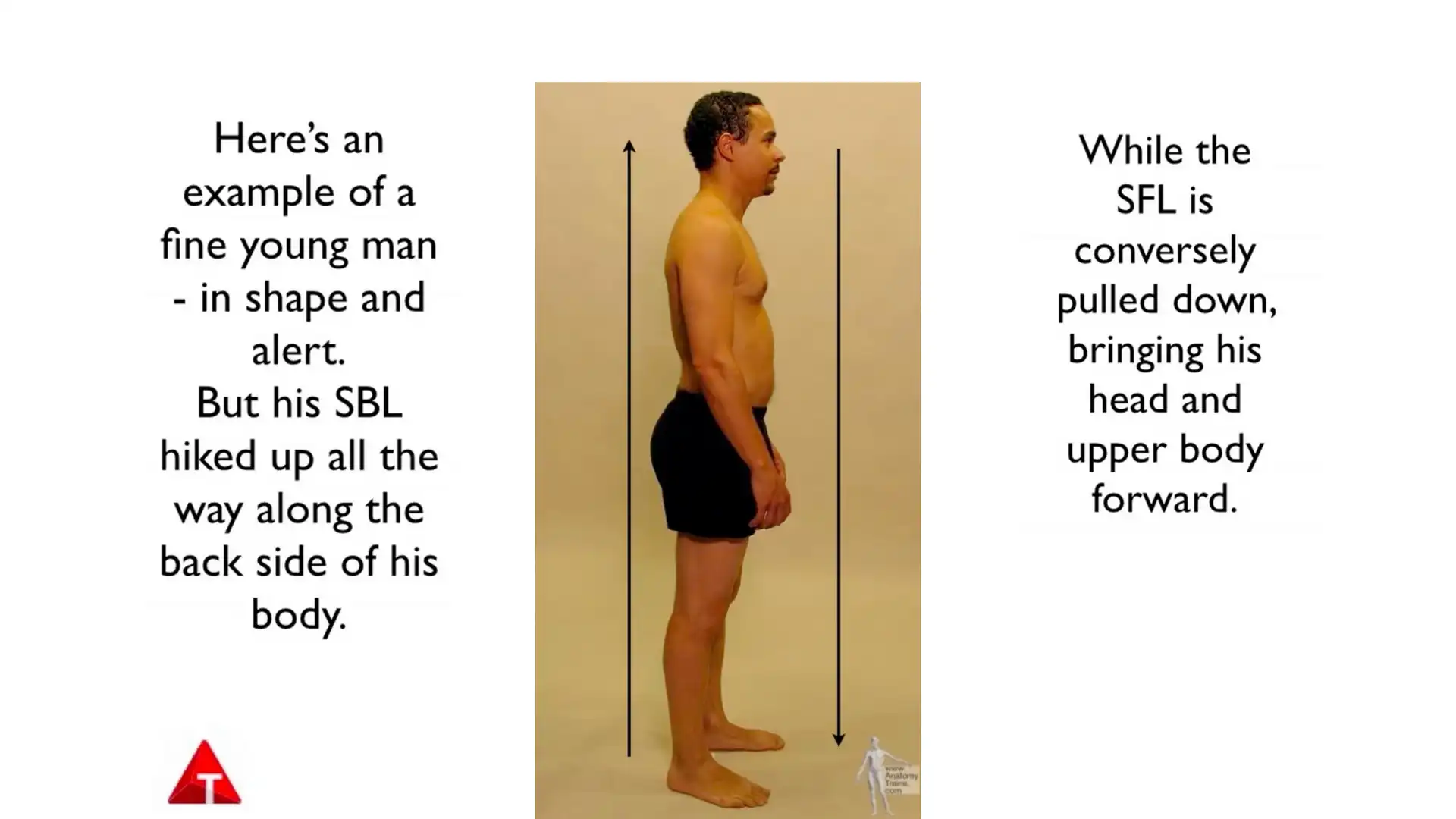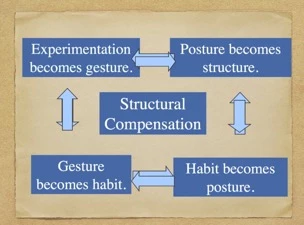The Fascia Connection: Tom Myers on How Postural Habits Get Locked into Our Fascial System

Can our postural habits damage our wellbeing and even health over the long term? In this article, Anatomy Trains author Tom Myers charts how postural habits slowly become lodged in our fascial system and structure. Once this happens, we get locked in certain patterns that generally don’t serve us.
Postural habits start early, as a simple experiment. If you watch a baby, you’ll see they’re constantly experimenting with their environment: Once they’ve done it once, they’ll do it again and again. The experiment becomes a gesture, it becomes written into the brain. And as the child repeats that gesture, it becomes a habit, which is even more ingrained into the brain.
Then that habit requires a posture to support it, so the body adapts to hold that posture. And if someone holds a posture for a long time, that posture becomes structure. It literally gets written into the fascia, notes renowned Anatomy Trains author Tom Myers.
Tom Myers on How Posture Becomes Structure
The way posture is changed is a double-edged sword, notes Tom. In the case of the baby, the changes in fascia that allow the body to move around and physically support itself are positive changes. But if, for example, you are dealing with depression, it’s easy to get in the habit of hunching forward, almost as if to hide yourself or protect your chest.
 The rest of your body will adapt to that posture, and gradually, it will become more and more engrained into your nervous system. Your fascia will reshape to help hold that posture, forming a new structure for your body.
The rest of your body will adapt to that posture, and gradually, it will become more and more engrained into your nervous system. Your fascia will reshape to help hold that posture, forming a new structure for your body.
“This can not only reinforce the psychology that started the forward hunch, it leads to shorter, shallower breathing, which affects body and brain chemistry and can lead to more depression or anxiety,” Tom says.
In addition, this new imbalanced structure will put certain muscle groups into a state of chronic tension. This is called ischemia, and it’s the cause of about 80% of muscle pain. In ischemia, the tension in the muscles compresses blood vessels and limits the supply of oxygen and food, which causes pain and damage.
The key to relieving chronic pain is often to release the harmful physical patterns that lead to these dysfunctions and replace them with healthier ones. And once we do so, once we’ve reduced unnecessary tension in the soft tissues in the body, it has tremendous implications for our whole structure — not just our body, but our extended body-mind as well.
“This is why yoga is so, so valuable: it has a direct effect on our fascia. It helps us move out of stuck patterns, and because it works with the fascia, it is much faster at doing so than some other methods that are just training the nervous system,” Tom notes. “Tai Chi and personal training and other approaches are very valuable, and each has its own strength. But the strength of yoga is that it works into the structure of the body as well as the structure of the habit.”
“So to get out of the structure of depression, or anxiety, or whatever stress patterns are affecting the form of your body, you need to get into the fascia and change the neurology of the posture, which is very deep, and sometimes very emotionally based. Once you unravel the deep pattern of structure in your body, you will have the opportunity to make new experiments, experiments you couldn’t have made if you were stuck in that old structure.”
For example, once you’ve worked your fascia into a more malleable place, you can begin to develop a posture to support deeper breathing and a broader chest. And the fascia will begin to form a new structure around that new posture. Many people who have worked with their bodies to undo old patterns and form these new habits find there is a corresponding shift in their outlook as well: they feel differently, and they approach life differently.
“Can you change the person by changing the shape?” I would say: yes, you can, and fascia is a part of that. However, the fascia doesn’t change overnight. It’s a kind of slow St. Bernard dog, but it will come along.
Bodywork techniques like Rolfing is one way to slowly reshape the fascia. And so is yoga. The trick is to learn to observe the body in balance, so you don’t keep reinforcing old patterns. This is where body reading and the Anatomy Trains model can provide useful tools.
Also, read...
4 Yogic Tips to Make your New Year’s Resolutions Stick
Yoga for Mindful Eating: 12 Tips for Practicing Presence While You Eat
Healthy Chocolate Truffles
Related courses

Eva Norlyk Smith, Ph.D., C-IAYT, is the founder and President of YogaUOnline. She is a lead trainer in YogaUOnline’s Yoga Wellness Educator program, an RYT-300 Yoga Alliance-approved training that focuses on giving teachers the skills they need to offer wellness courses and work with older beginners.
Eva is a trained yoga therapist at the 1,000-hour level as well as a trained bodyworker at the 500-hour level. She is the co-author of several books, including Light Years Younger with Dr. David J. Goldberg.



